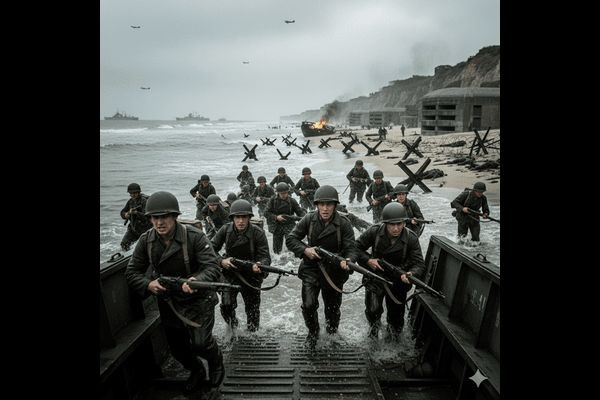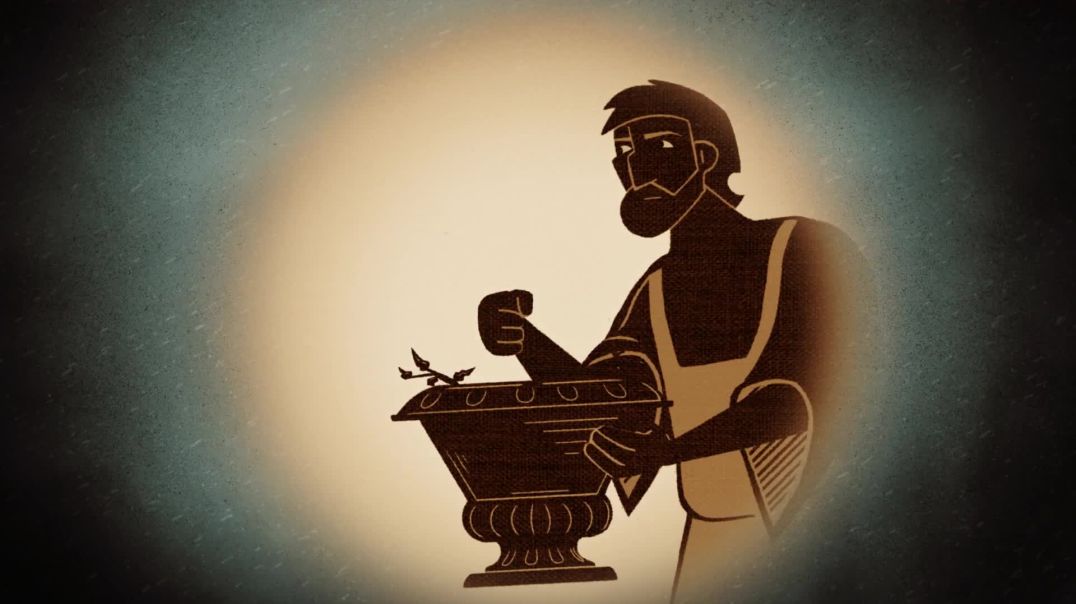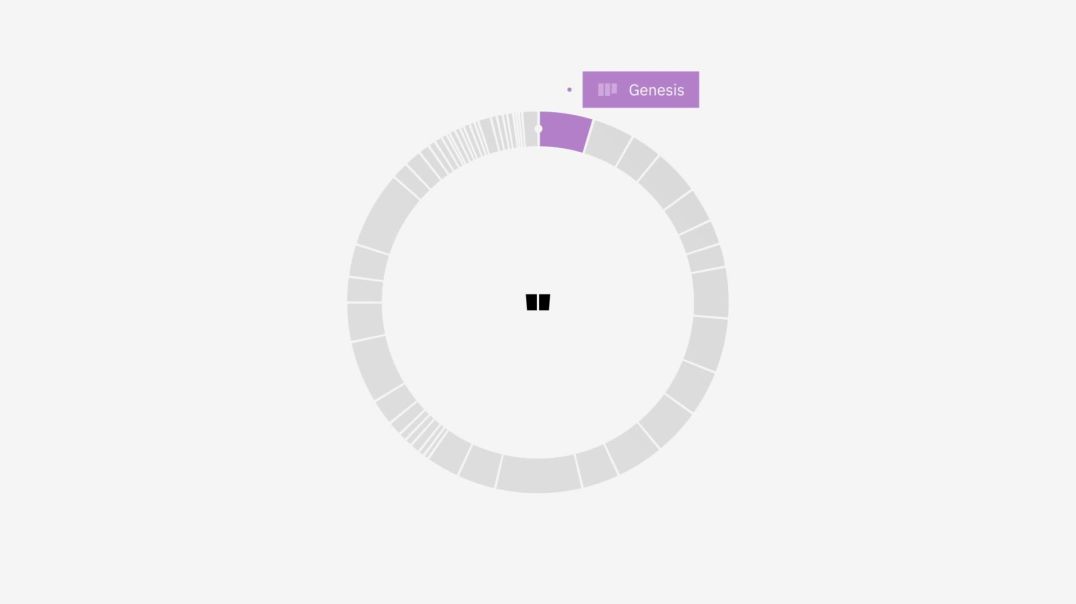World War II: The Global Cataclysm and the Birth of the Modern Era
World War II (1939–1945) was, by any measure, the most destructive and expansive conflict in human history. Mobilizing over 100 million people from more than 30 countries, the war resulted in an estimated 70 to 85 million fatalities—a staggering 3% of the world's population at the time. It was a war defined by existential ideologies, technological terror, and unprecedented atrocity, ultimately leading to a complete restructuring of the global political order. It permanently ended European dominance, cemented the rise of the United States and the Soviet Union, and established the nuclear shadow under which the world would live for the next half-century.
I. The Road to War: Unresolved Issues and Ideological Extremism
World War II was not a fresh conflict but the direct and inevitable consequence of the unaddressed failures and resentments following World War I.
The Failure of Versailles and Economic Despair
The Treaty of Versailles (1919) imposed punitive terms on Germany, including massive reparations and the humiliating War Guilt Clause. These harsh conditions fostered deep resentment and political instability in Germany. When the Great Depression hit the global economy in 1929, the resulting mass unemployment and social chaos created fertile ground for extremist, authoritarian ideologies that promised national rebirth and revenge.
The Rise of the Axis Powers
Three expansionist, anti-democratic powers consolidated their control and began to violate international norms:
-
Germany (Naziism): Led by Adolf Hitler, the Nazi Party advocated an extreme form of nationalism, racial superiority (especially anti-Semitism), and the need for Lebensraum (living space) in Eastern Europe. Hitler openly rejected the Versailles Treaty by rearming the military and remilitarizing the Rhineland (1936).
-
Italy (Fascism): Under Benito Mussolini, Fascist Italy sought to recreate the glory of the Roman Empire, invading Ethiopia in 1935.
-
Japan (Militarism): Driven by an imperial quest for resources and regional dominance, Japan’s military-led government invaded Manchuria in 1931, challenging the established order in Asia.
The Policy of Appeasement
Faced with the aggression of the Axis powers, Britain and France adopted a policy of Appeasement, hoping to avoid another devastating European war by granting Hitler limited territorial demands. The peak of this policy was the Munich Agreement (1938), where Britain and France permitted Germany to annex the Sudetenland region of Czechoslovakia in exchange for Hitler's promise of no further expansion. This policy failed; instead of achieving "peace for our time," it merely emboldened Hitler and gave him crucial time to prepare for full-scale war.
The final trigger came on September 1, 1939, when Germany invaded Poland. Two days later, Britain and France honored their defense commitments to Poland and declared war on Germany.
II. The Axis Triumphant: Blitzkrieg and Global Expansion (1939–1941)
The early phase of the war was dominated by stunning Axis victories, primarily utilizing the terrifying new German doctrine of Blitzkrieg (lightning war).
The Western Front Collapses
After conquering Poland in a matter of weeks, Hitler turned West. In the spring of 1940, the Blitzkrieg technique—combining coordinated, rapid strikes by tanks (panzers), motorized infantry, and overwhelming air support—smashed through the Low Countries and France. France, relying on static defense, collapsed rapidly, signing an armistice in June 1940. The British Expeditionary Force (BEF) barely escaped the continent through the desperate Dunkirk evacuation.
The Battle of Britain
Britain, led by Prime Minister Winston Churchill, stood alone against the Nazi war machine. Germany's next objective was Operation Sea Lion (the invasion of Britain), but first, they had to gain air superiority. The Battle of Britain (Summer 1940) was the first major battle fought entirely in the air. The Royal Air Force (RAF), utilizing radar and skilled pilots, successfully defended the island against the German Luftwaffe. This failure was Hitler's first major setback and prevented an invasion.
The Opening of the Eastern Front
Having failed to defeat Britain, Hitler made his most fateful decision: the invasion of his ideological enemy and treaty partner, the Soviet Union (Operation Barbarossa), in June 1941. This opened the enormous, bloody Eastern Front, which would consume over 80% of German military manpower and determine the fate of the war. Despite initial spectacular advances, the German invasion was halted by the brutal Russian winter and fierce Soviet resistance outside Moscow.
III. The World at War: The Global Turning Points (1941–1943)
The year 1941 saw the war truly become global, pulling the United States and the Soviet Union into a massive, unified Allied effort.
Pearl Harbor and U.S. Entry
In the Pacific, the U.S. had imposed severe economic sanctions on Japan to protest its aggression in China. Seeking to eliminate the U.S. Pacific Fleet and secure oil resources in Southeast Asia, Japan launched a surprise attack on the U.S. naval base at Pearl Harbor, Hawaii, on December 7, 1941. The following day, the U.S. declared war on Japan; days later, Germany and Italy declared war on the U.S. The global nature of the conflict was now finalized, with the world divided between the Allies (U.S., Great Britain, U.S.S.R., China, and others) and the Axis (Germany, Japan, Italy).
The Holocaust and the War of Ideology
As the war raged, the ideological horror of the conflict escalated. The Nazi regime systematically implemented the Holocaust (the Shoah), the state-sponsored, systematic persecution and murder of approximately six million Jews, as well as millions of others deemed "undesirable" (Roma, disabled persons, Slavic peoples, political opponents). The extermination camps, such as Auschwitz and Treblinka, stand as indelible symbols of industrialized mass murder.
The Tides Turn (1942–1943)
The Allies’ superior industrial production and immense manpower reserves began to shift the balance of power, leading to three critical turning point battles:
-
The Pacific (Midway, June 1942): The U.S. Navy decisively defeated the Japanese fleet, sinking four carriers. This victory crippled Japan's capacity for offensive operations and began the long, brutal "island-hopping" campaign aimed at driving the Japanese military back toward their home islands.
-
North Africa (El Alamein, October 1942): British forces, led by General Bernard Montgomery, halted the German-Italian advance under Field Marshal Erwin Rommel in Egypt. This victory secured the vital Suez Canal and led to the eventual surrender of Axis forces in North Africa in 1943.
-
The Eastern Front (Stalingrad, August 1942 – February 1943): The Soviet Red Army successfully defended the city of Stalingrad in a savage, house-to-house battle. This was the single bloodiest battle in history and resulted in the catastrophic loss and capture of a massive German army. Stalingrad was the psychological and strategic high point of the war for the Axis; after this defeat, Germany was forced onto the defensive for the remainder of the war in Europe.
IV. The Allied Coordinated Offensive and Victory in Europe (1944–1945)
With the tide decisively turned, the Allies began planning a massive, coordinated two-front assault to defeat Hitler: the Soviet Union driving from the East, and the Western Allies invading from the West.
The Western Front Reopens: D-Day
The long-awaited invasion of Western Europe, Operation Overlord, occurred on June 6, 1944 (D-Day). Over 156,000 American, British, and Canadian troops landed on the beaches of Normandy, France, under heavy fire. This invasion successfully established a massive Western Front that Hitler had desperately tried to avoid. The liberation of Paris followed two months later.
The Home Front and Total Mobilization
The war was won not only on the battlefield but also in the factories. In the U.S., the "Arsenal of Democracy" mobilized the economy to produce staggering amounts of military material, including tanks, planes, and ships. The massive labor demand pulled millions of women into factory jobs ("Rosie the Riveter") and spurred wartime migration. Similarly, the Soviets endured tremendous sacrifices, moving their factories east and sustaining the war effort at an immense human cost.
The Collapse of the Third Reich
In the East, the Red Army launched relentless offensives that pushed the Wehrmacht out of Soviet territory and into Eastern Europe. Facing pressure from both West and East, Hitler made a final, desperate gamble, the Battle of the Bulge (December 1944), which failed to break the Allied lines.
As Soviet troops closed in on Berlin, Hitler committed suicide in his bunker on April 30, 1945. Germany formally surrendered on May 8, 1945 (V-E Day), marking the end of the war in Europe.
V. The End in the Pacific and the Nuclear Dawn (1945)
The war against Japan continued, marked by brutal fighting and heavy casualties as U.S. forces fought the Japanese across heavily fortified islands, including Iwo Jima and Okinawa. Facing the prospect of an invasion of the Japanese home islands, which military planners predicted would cost millions of casualties on both sides, U.S. President Harry S. Truman chose a devastating alternative.
The Atomic Bomb
The U.S. deployed the world's first atomic bombs. On August 6, 1945, the first bomb was dropped on Hiroshima, followed by a second on Nagasaki on August 9. The use of nuclear weapons caused unprecedented destruction and immediate mass death, stunning the world.
Faced with this new, terrifying weapon and the Soviet declaration of war on Japan (August 8), the Japanese Emperor Hirohito announced his nation's surrender on August 15. The formal surrender ceremony took place aboard the USS Missouri on September 2, 1945 (V-J Day), officially ending World War II.
VI. The Enduring Legacy: A New World Order
The conclusion of World War II did not bring lasting global peace but established a new framework for international relations.
The Cold War
The alliance between the U.S. and the U.S.S.R., forged out of necessity, immediately fractured. Ideological, political, and economic differences led to the Cold War, a period of geopolitical tension, military buildup, and proxy conflicts defined by the rivalry between the two superpowers and the threat of nuclear annihilation. Europe was carved into two spheres of influence: the Soviet-dominated Eastern Bloc and the U.S.-backed Western Bloc.
International Institutions
Learning from the failure of the League of Nations, the victorious powers established the United Nations (UN) to promote international cooperation and prevent future conflicts. The Bretton Woods Agreement created the International Monetary Fund (IMF) and the World Bank to stabilize the global economy.
Decolonization and Human Rights
The war severely weakened European imperial powers (Britain, France), accelerating the global movement toward decolonization in Africa and Asia. Furthermore, the horrors of the Holocaust and the devastation of the war led to a new international focus on human rights, culminating in the Nuremberg Trials (holding Nazi leaders accountable for war crimes) and the drafting of the Universal Declaration of Human Rights.
World War II remains humanity's greatest historical scar—a conflict that forced societies to confront the depths of ideological evil while also demonstrating the immense capacity for cooperation, sacrifice, and technological innovation. Its legacy remains the foundation of the modern world, a constant reminder of the cost of unchecked ambition and the necessity of vigilance.








